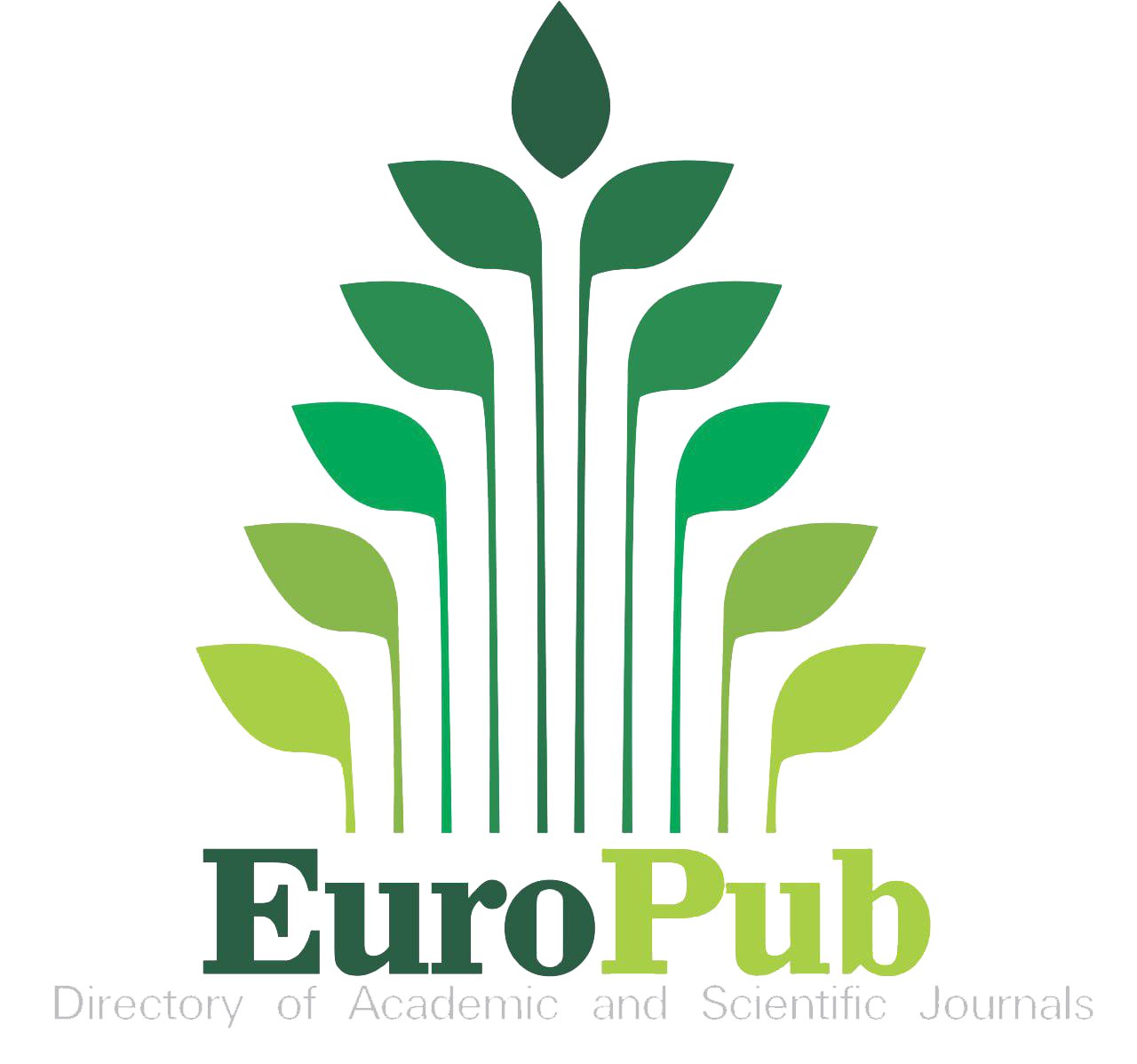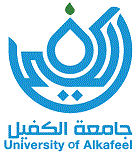Abstract
The tremendous development in various industrial and agricultural fields has led to an increase in pollution of soil and water bodies, which has been reflected in the quality of agricultural products and their quantity, as well as the damage that this pollution causes to human health and the growth system of other living organisms. Many soils are polluted with heavy metal elements like lead (Pb), zinc (Zn), cadmium (Cd), chromium (Cr), copper (Cu), iron (Fe), aluminum (Al), and mercury (Hg), which makes the environmental situation more difficult. As part of this sensitive stage, monitoring and analysis have become essential to assess the risk resulting from pollution and determine current environmental trends accurately and promptly. Established on the laser's produced plasma, a novel element analysis way called laser-induced breakdown spectroscopy (LIBS) has been developed. This method involves applying laser pulses to the sample to ablate it. This process causes the material to evaporate and ionize in a hot plasma, which the spectrometer then analyzes. The concentrations of various elements of environmental importance, like copper, cadmium, calcium, barium, magnesium, chromium, manganese, titanium, phosphorus, iron, zinc, and others, are determined using this technique because it has shown to be a reliable and efficient tool. Elements are detected by their spectroscopic fingerprint. The last twenty years have witnessed the presentation of much research in this field, which has dealt with various technical and environmental aspects. In this study, provided the basic principles of LIBS for soil analysis included The formation of plasma mainly consists of heating, melting, evaporation, ionization, and excitation processes, many of these studies will be reviewed to find out the latest developments, identify differences between researchers, and discuss several aspects related to these studies. This understanding will help optimize conditions for improved signal quality and stability. Another aim is to develop effective noise decreasing methods, such as signal averaging and advanced data processing techniques, to enhance the analytical features of LIBS and ensure accurate readings. The study will also explore the pollutants detection mechanisms inherent in LIBS, and will address the challenges associated with sample preparation, striving for minimal processing to facilitate direct analysis of soil samples. By achieving these objectives, the study aims to establish LIBS as a robust and reliable tool for assessing soil health and monitoring environmental contamination. It will make it easier for readers to comprehend the state of the LIBS technique's research in soil analysis today.
Recommended Citation
Mahmood, Ekhlas Jabir and Al- Sultani, Mithaq Muter Mehdy
(2024)
"Detection of Pollutants in Soil Using Laser-Induced Breakdown Spectroscopy (LIBS),"
Al-Bahir: Vol. 5:
Iss.
2, Article 9.
Available at: https://doi.org/10.55810/2313-0083.1079
References
[1] Dell'Aglio M, Gaudiuso R, Senesi GS, De Giacomo A, Zaccone C, Miano TM, et al. Monitoring of Cr, Cu, Pb, V and Zn in polluted soils by laser induced breakdown spectroscopy (LIBS). J Environ Monit 2011;13(5):1422e6.
[2] Spectroscopic study of Cu, Mn, Cd as heavy metals in agricultural samples. In: Fayek N, Tawfik W, Khalafallah A, Hamed S, Mousa W, editors. IOP conference series: materials science and engineering. IOP Publishing; 2021.
[3] Fayek N, Tawfik W, Khalafallah A, Hamed S, Mousa W, Fikry MJ. Evaluation of heavy metal presence in agricultural samples of Lactuca sativa and Trifolium alexandrinum using picosecond laser-induced breakdown spectroscopy and flame atomic absorption spectroscopy in banha and Giza Governorates, Egypt. Minerals 2023;13(10):1300.
[4] Senesil GS, Baldassarre G, Senesi N, Radina BJ. Trace element inputs into soils by anthropogenic activities and implications for human health. Chemosphere 1999;39(2): 343e77.
[5] Yu K-Q, Zhao Y-R, Liu F, He Y. Laser-induced breakdown spectroscopy coupled with multivariate chemometrics for variety discrimination of soil. Sci Rep 2016;6(1):27574.
[6] Peng J, Liu F, Zhou F, Song K, Zhang C, Ye L, et al. Challenging applications for multi-element analysis by laserinduced breakdown spectroscopy in agriculture: a review. TrAC Trends Anal Chem 2016;85:260e72.
[7] Fikry M, Tawfik W, Omar M. Controlling the plasma electron number density of copper metal using NIR picosecond laser-induced plasma spectroscopy. Opt Appl 2021;51(3).
[8] Fikry M, Tawfik W, Omar M. Measurement of the electron temperature in a metallic copper using ultrafast laserinduced breakdown spectroscopy. J Russ Laser Res 2020; 41(5):484e90.
[9] Ismail MA, Imam H, Elhassan A, Youniss WT, Harith MAJ. LIBS limit of detection and plasma parameters of some elements in two different metallic matrices. J Anal At Spectrom 2004;19(4):489e94.
[10] Peng J, He Y, Ye L, Shen T, Liu F, Kong W, et al. Moisture influence reducing method for heavy metals detection in plant materials using laser-induced breakdown spectroscopy: a case study for chromium content detection in rice leaves 2017;89(14):7593e600. Table 3. Some LOD and emission lines of soil nutrients. Nutrients LOD (g/Kg) Emission lines (nm) References Aluminum (Al) 6.45 220.8 [83] Boron (B) 1.0 255.14 [84] Calcium (Ca) 89 317.9 [85] Chlorine (Cl) 75 133.6 [84] Copper (Cu) 0.6 324.75 [86] Iron (Fe) 10 274.6 [85] Magnesium (Mg) 4 280.27 [85] Manganese (Mn) 7 380.67 [87] Molybdenum (Mo) 0.3 313.26 [86] Nitrogen (N) 8.0 742.36 [88] Phosphorus (P) 0.251 178.3 [85] Potassium (K) 46 404.7 [85] Sulphur (S) 1.1 180.7 [69] Zinc (Zn) 18 213.86 [19] AL-BAHIR JOURNAL FOR ENGINEERING AND PURE SCIENCES 2024;5:172e182 179
[11] Canel T, Demir P, Kacar E, Oztoprak BG, Akman E, Gunes M, et al. Optimization of parameters for depth resolution of galvanized steel by LIBS technique. Opt Laser Technol 2013;54:257e64.
[12] Rehse S, Salimnia H, Miziolek AJ. Laser-induced breakdown spectroscopy (LIBS): an overview of recent progress and future potential for biomedical applications. J Med Eng Technol 2012;36(2):77e89.
[13] Yu X, Li Y, Gu X, Bao J, Yang H, Sun L, et al. Laser-induced breakdown spectroscopy application in environmental monitoring of water quality: a review. Environ Monit Assess 2014;186:8969e80.
[14] Tawfik W, Bousiakou LG, Qindeel R, Farooq W, Alonizan NH, Fatani AJ. Trace analysis of heavy metals in groundwater samples using laser induced breakdown spectroscopy (LIBS). Optoelectron Adv Mater 2015;9:185e92.
[15] Hussain T, Gondal M, Yamani Z, Baig M. Measurement of nutrients in green house soil with laser induced breakdown spectroscopy. Environ Monit Assess 2007;124:131e9.
[16] Senesi G, Dell'Aglio M, Gaudiuso R, De Giacomo A, Zaccone C, De Pascale O, et al. Heavy metal concentrations in soils as determined by laser-induced breakdown spectroscopy (LIBS), with special emphasis on chromium. Environ Res 2009;109(4):413e20.
[17] Pandhija S, Rai N, Rai AK, Thakur SN. Contaminant concentration in environmental samples using LIBS and CFLIBS. Appl Phy B 2010;98:231e41.
[18] Ismael A, Bousquet B, Michel-Le Pierres K, Travaille G, Canioni L, Roy S. In situ semi-quantitative analysis of polluted soils by laser-induced breakdown spectroscopy (LIBS). Appl Spectrosc 2011;65(5):467e73.
[19] Popov A, Kozhnov M, Labutin T, Zaytsev S, Drozdova A, Mityurev N. Rapid determination of zinc in soils by laserinduced breakdown spectroscopy. Tech Phys Lett 2013;39: 81e3.
[20] Mekonnen KN, Ambushe AA, Chandravanshi BS, Abshiro MR, du Plessis A, McCrindle RI. Assessment of the concentration of Cr, Mn and Fe in sediment using laserinduced breakdown spectroscopy. Bull Chem Soc Ethiop 2013;27(1):1e13.
[21] Kim K-R, Kim G, Kim J-Y, Park K, Kim K-WJ. Kriging interpolation method for laser induced breakdown spectroscopy (LIBS) analysis of Zn in various soils. J Anal At Spectrom 2014;29(1):76e84.
[22] Ferreira EC, Neto JAG, Milori DM, Ferreira EJ, Anzano JM. Laser-induced breakdown spectroscopy: extending its application to soil pH measurements. Spectrochim Acta Part B At Spectrosc 2015;110:96e9.
[23] Nicolodelli G, Senesi GS, de Oliveira Perazzoli IL, Marangoni BS, Benites VDM, Milori DMBP. Double pulse laser induced breakdown spectroscopy: a potential tool for the analysis of contaminants and macro/micronutrients in organic mineral fertilizers. Sci Total Environ 2016;565: 1116e23.
[24] Kim G, Yoon Y-J, Kim H-A, Cho H-j, Park KJ. Elemental composition of Arctic soils and aerosols in Ny-Ålesund measured using laser-induced breakdown spectroscopy. Spectrochim Acta Part B At Spectrosc 2017;134:17e24.
[25] Fu X, Li G, Tian H, Dong D. Detection of cadmium in soils using laser-induced breakdown spectroscopy combined with spatial confinement and resin enrichment. RSC Adv 2018; 8(69):39635e40.
[26] Mahmood Akhtar MA, Abdul Jabbar AJ, Shaukat Mahmood SM, Umar Z, Rizwan Ahmed RA, Baig M. Analysis of soil by magnetic field assisted calibration-free laser induced breakdown spectroscopy (CF-LIBS) and laser ablation-time-of-flight mass spectrometry (LA-TOF-MS). Anal Lett 2019;52(14):1e17.
[27] Detection of heavy metal containment of soil pollution due to waste of paper industry using Nd: YAG laser induced breakdown spectroscopy. In: Sugito H, Khumaeni A, Binu Q, editors. Journal of Physics: Conference Series. IOP Publishing; 2020.
[28] Yoon S, Choi J, Moon S-J, Choi JH. Determination and quantification of heavy metals in sediments through laserinduced breakdown spectroscopy and partial least squares regression. Appl Sci 2021;11(15):7154.
[29] Awad ARM. Analysis of toxic elements, heavy and radioactive in Kadugli soil using spectroscopic techniques. Sudan University of Science & Technology; 2022.
[30] Gupta S, Pandotra P, Gupta A, Dhar J, Sharma G, Ram G, et al. Volatile (As and Hg) and non-volatile (Pb and Cd) toxic heavy metals analysis in rhizome of Zingiber officinale collected from different locations of North Western Himalayas by Atomic Absorption Spectroscopy. Food Chem Toxicol 2010;48(10):2966e71.
[31] Zhang Y, Zhang T, Li H. Application of laser-induced breakdown spectroscopy (LIBS) in environmental monitoring. Spectrochim Acta Part B At Spectrosc 2021;181:106218.
[32] Villas-Boas PR, Romano RA, de Menezes Franco MA, Ferreira EC, Ferreira EJ, Crestana S, et al. Laser-induced breakdown spectroscopy to determine soil texture: a fast analytical technique. Geoderma 2016;263:195e202.
[33] Fortes FJ, Moros J, Lucena P, Cabalín LM, Laserna JJ. Laserinduced breakdown spectroscopy. Anal Chem 2013;85(2): 640e69.
[34] Akhtar M, Jabbar A, Mehmood S, Ahmed N, Ahmed R, Baig M. Magnetic field enhanced detection of heavy metals in soil using laser induced breakdown spectroscopy. Spectrochim Acta Part B At Spectros 2018;148:143e51.
[35] Guo L, Zhang B, He X, Li C, Zhou Y, Wu T, et al. Optimally enhanced optical emission in laser-induced breakdown spectroscopy by combining spatial confinement and dualpulse irradiation. Opt Express 2012;20(2):1436e43.
[36] Zakuskin AS, Popov AM, Zorov NB, Labutin TA. Confinement of laser plasma by shock waves for increasing signal intensity in spectrochemical determination of trace elements in ores. Tech Phys Lett 2018;44:73e6.
[37] Liu Y, Bousquet B, Baudelet M, Richardson M. Improvement of the sensitivity for the measurement of copper concentrations in soil by microwave-assisted laser-induced breakdown spectroscopy. Spectrochim Acta Part B At Spectros 2012;73: 89e92.
[38] Rehan I, Gondal M, Rehan K. Determination of lead content in drilling fueled soil using laser induced spectral analysis and its cross validation using ICP/OES method. Talanta 2018; 182:443e9.
[39] Li KeXue LK, Zhou WeiDong ZW, Shen QinMei SQ, Ren ZhiJun RZ, Peng BaoJin PB. Laser ablation assisted spark induced breakdown spectroscopy on soil samples. J Anal At Spectrome 2010;25(9):1475e81.
[40] Cremers DA, Radziemski LJ. Handbook of laser-induced breakdown spectroscopy. John Wiley & Sons; 2013.
[41] Khan Z, Ullah MH, Rahman B, Talukder AI, Wahadoszamen M, Abedin K, et al. Laser-induced breakdown spectroscopy (LIBS) for trace element detection: a review. J Spectrosc 2022;2022(1):3887038.
[42] Thakur SN, Singh JPJL-IBS. Fundamentals of LIBS and recent developments. 2020. p. 3e22.
[43] Jean-No€ela MK, Arthurb KT, Jean-Marcc B. LIBS technology and its application: overview of the different research areas. J Environ Sci Public Health 2020;4(3):134e49.
[44] Pathak AK, Kumar R, Singh VK, Agrawal R, Rai S, Rai AK. Assessment of LIBS for spectrochemical analysis: a review. Appl Spectrosc Rev 2012;47(1):14e40.
[45] Khater MA. Trace detection of light elements by laserinduced breakdown spectroscopy (LIBS): applications to non-conducting materials. Opt Spectrosc 2013;115:574e90.
[46] Xu X, Du C, Ma F, Shen Y, Zhou J. Fast and simultaneous determination of soil properties using laser-induced breakdown spectroscopy (LIBS): a case study of typical farmland soils in China. Earth-Sci Rev 2019;3(4):66.
[47] Sun C, Tian Y, Gao L, Niu Y, Zhang T, Li H, et al. Machine learning allows calibration models to predict trace element concentration in soils with generalized LIBS spectra. Sci Rep 2019;9(1):11363.180 AL-BAHIR JOURNAL FOR ENGINEERING AND PURE SCIENCES 2024;5:172e182
[48] Guo G, Niu G, Shi Q, Lin Q, Tian D, Duan Y. Multi-element quantitative analysis of soils by laser induced breakdown spectroscopy (LIBS) coupled with univariate and multivariate regression methods. Anal Methods 2019;11(23):3006e13.
[49] Jantzi SC, Almirall JR. Elemental analysis of soils using laser ablation inductively coupled plasma mass spectrometry (LAICP-MS) and laser-induced breakdown spectroscopy (LIBS) with multivariate discrimination: tape mounting as an alternative to pellets for small forensic transfer specimens. Appl Spectrosc 2014;68(9):963e74.
[50] Popov AM, Colao F, Fantoni RJ. Spatial confinement of laserinduced plasma to enhance LIBS sensitivity for trace elements determination in soils. At Spectrom 2010;25(6):837e48.
[51] Zhou R, Tang Z, Liu K, Zhang W, Liu K, Li X, et al. High sensitivity analysis of soil by laser-induced breakdown spectroscopy with Ag nanoparticles. Opt Laser Technol 2022; 155:108386.
[52] Villas-Boas PR, Franco MA, Martin-Neto L, Gollany HT, Milori DM. Applications of laser-induced breakdown spectroscopy for soil characterization, part II: review of elemental analysis and soil classification. Eur J Soil Sci 2020;71(5): 805e18.
[53] Kim G, Kwak J, Kim K-R, Lee H, Kim K-W, Yang H, et al. Rapid detection of soils contaminated with heavy metals and oils by laser induced breakdown spectroscopy (LIBS). J Hazard Mater 2013;263:754e60.
[54] Lal B, Zheng H, Yueh F-Y, Singh JP. Parametric study of pellets for elemental analysis with laser-induced breakdown spectroscopy. Appl Opt 2004;43(13):2792e7.
[55] Bricklemyer RS, Brown DJ, Barefield JE, Clegg SM. Intact soil core total, inorganic, and organic carbon measurement using laser-induced breakdown spectroscopy. Soil Sci Soc Am J 2011;75(3):1006e18.
[56] Bricklemyer RS, Brown DJ, Turk PJ, Clegg S. Comparing viseNIRS, LIBS, and combined viseNIRS-LIBS for intact soil core soil carbon measurement. Soil Sci Soc Am J 2018;82(6): 1482e96.
[57] Bricklemyer RS, Brown DJ, Turk PJ, Clegg SM. Improved intact soil-core carbon determination applying regression shrinkage and variable selection techniques to complete spectrum laser-induced breakdown spectroscopy (LIBS). Appl Spectrosc 2013;67(10):1185e99.
[58] Beal SA, Mossell AM, Clausen JL. Matrix and target particlesize effects on LIBS analysis of soils. 2020.
[59] Pouzar M, Kratochvíl T, Kaski S, Kaiser J, Knotek P, Capek L, et al. Effect of particle size distribution in laser-induced breakdown spectroscopy analysis of mesoporous VeSiO 2 catalysts. J Anal At Spectrom 2011;26(11):2281e8.
[60] Asgill ME, Hahn DW. Particle size limits for quantitative aerosol analysis using laser-induced breakdown spectroscopy: temporal considerations. Spectrochim Acta Part B At Spectrosc 2009;64(10):1153e8.
[61] McIntyre TJP. Phytoremediation of heavy metals from soils. 2003. p. 97e123.
[62] Singh R, Gautam N, Mishra A, Gupta RJ. Heavy metals and living systems: an overview. Indian J Pharmacol 2011;43(3): 246.
[63] Labutin TA, Zaytsev SM, Popov AM, Zorov NBJ. A novel approach to sensitivity evaluation of laser-induced breakdown spectroscopy for rare earth elements determination. J Anal At Spectrom 2016;31(11):2223e6.
[64] Akhtar M, Jabbar A, Mahmood S, Umar ZA, Ahmed R, Aslam Baig M. Analysis of soil by magnetic field assisted calibration-free laser induced breakdown spectroscopy (CFLIBS) and laser ablationetime-of-flight mass spectrometry (LA-TOF-MS). Anal Lett 2019;52(14):2312e28.
[65] Mukhono P, Angeyo K, Dehayem-Kamadjeu A, Kaduki K. Laser induced breakdown spectroscopy and characterization of environmental matrices utilizing multivariate chemometrics. Spectrochim Acta Part B At Spectrosc 2013;87:81e5.
[66] Morra M, Hall M, Freeborn L. Carbon and nitrogen analysis of soil fractions using near-infrared reflectance spectroscopy. Soil Sci Soc Am J 1991;55(1):288e91.
[67] Hossen MA, Diwakar PK, Ragi S. Total nitrogen estimation in agricultural soils via aerial multispectral imaging and LIBS. Sci Rep 2021;11(1):12693.
[68] Martin MZ, Wullschleger SD, Garten CT, Palumbo AV. Laser-induced breakdown spectroscopy for the environmental determination of total carbon and nitrogen in soils. Appl Opt 2003;42(12):2072e7.
[69] Kuo S, Sparks DJSSSoA, Madison WI. Methods of soil analysis. Part 3: Chemical methods. 1996. p. 894e5.
[70] Dixon JJSSSAJMW. Kaolin and Serpentine group minerals. In: Dixon JB, Weed SB, editors. Minerals in soil environments; 1989. p. 551e634.
[71] Rühlmann M, Büchele D, Ostermann M, Bald I, Schmid T. Challenges in the quantification of nutrients in soils using laser-induced breakdown spectroscopyeA case study with calcium. Spectrochim Acta Part B At Spectrosc 2018;146: 115e21.
[72] Villas-Boas PR, Franco MA, Martin-Neto L, Gollany HT, Milori DM. Applications of laser-induced breakdown spectroscopy for soil analysis, part I: review of fundamentals and chemical and physical properties. Eur J Soil Sci 2020;71(5): 789e804.
[73] Fabre CJ. Advances in Laser-Induced Breakdown Spectroscopy analysis for geology: a critical review. Spectrochim Acta Part B At Spectrosc 2020;166:105799.
[74] Hussain T, Gondal M. Monitoring and assessment of toxic metals in Gulf War oil spill contaminated soil using laserinduced breakdown spectroscopy. Environ Monit Assess 2008;136:391e9.
[75] Srungaram PK, Ayyalasomayajula KK, Yu-Yueh F, Singh JP. Comparison of laser induced breakdown spectroscopy and spark induced breakdown spectroscopy for determination of mercury in soils. Spectrochim Acta Part B At Spectrosc 2013; 87:108e13.
[76] Shaheen ME, Tawfik W, Mankoula AF, Gagnon JE, Fryer BJ, El-Mekawy F, et al. Determination of heavy metal content and pollution indices in the agricultural soils using laser ablation inductively coupled plasma mass spectrometry. Environ Sci Pollut Res 2021;28:36039e52.
[77] Suyanto H, Lie TJ, Kurniawan KH, Kagawa K, Tjia MO. Practical soil analysis by laser induced breakdown spectroscopy employing subtarget supported micro mesh as a powder sample holder. Spectrochim Acta Part B At Spectrosc 2017;137:59e63.
[78] Hussein NA, Hameed MA. Design and constructions laserinduced breakdown spectroscopy system to determine the fertility of north Iraqi soil. Iraqi J Sci 2018;16(38):56e65.
[79] Essington ME, Melnichenko GV, Stewart MA, Hull RA. Soil metals analysis using laser-induced breakdown spectroscopy (LIBS). Soil Sci Soc Am J 2009;73(5):1469e78.
[80] Yang N, Eash NS, Lee J, Martin MZ, Zhang Y-S, Walker FR, et al. Multivariate analysis of laser-induced breakdown spectroscopy spectra of soil samples. Soil Sci 2010;175(9): 447e52.
[81] Nicolodelli G, Marangoni BS, Cabral JS, Villas-Boas PR, Senesi GS, Dos Santos CH, et al. Quantification of total carbon in soil using laser-induced breakdown spectroscopy: a method to correct interference lines. Appl Opt 2014;53(10):2170e6.
[82] Hassan M, Sighicelli M, Lai A, Colao F, Ahmed AH, Fantoni R, et al. Studying the enhanced phytoremediation of lead contaminated soils via laser induced breakdown spectroscopy. Spectrochim Acta Part B At Spectrosc 2008;63(10): 1225e9.
[83] Erler A, Riebe D, Beitz T, Lohmannsr € oben H-G, Gebbers R. € Soil nutrient detection for precision agriculture using handheld laser-induced breakdown spectroscopy (LIBS) and multivariate regression methods (PLSR, Lasso and GPR). Sensors 2020;20(2):418.
[84] Radziemski L, Cremers DA, Benelli K, Khoo C, Harris RD. Use of the vacuum ultraviolet spectral region for laserinduced breakdown spectroscopy-based Martian geology and exploration. Spectrochim Acta Part B At Spectrosc 2005; 60(2):237e48. AL-BAHIR JOURNAL FOR ENGINEERING AND PURE SCIENCES 2024;5:172e182 181
[85] Diaz D, Hahn DW, Molina A. Evaluation of laser-induced breakdown spectroscopy (LIBS) as a measurement technique for evaluation of total elemental concentration in soils. Appl Spectrosc 2012;66(1):99e106.
[86] Popov AM, Labutin TA, Zaytsev SM, Seliverstova IV, Zorov NB, Kal’ko IA, et al. Determination of Ag, Cu, Mo and Pb in soils and ores by laser-induced breakdown spectrometry. J Anal At Spectrom 2014;29(10):1925e33.
[87] Multari RA, Foster LE, Cremers DA, Ferris MJ. Effect of sampling geometry on elemental emissions in laser-induced breakdown spectroscopy. Appl Spectrosc 1996;50(12): 1483e99.
[88] Harris RD, Cremers DA, Ebinger MH, Bluhm BK. Determination of nitrogen in sand using laser-induced breakdown spectroscopy. Appl Spectrosc 2004;58(7): 770e5
















Indexed in: